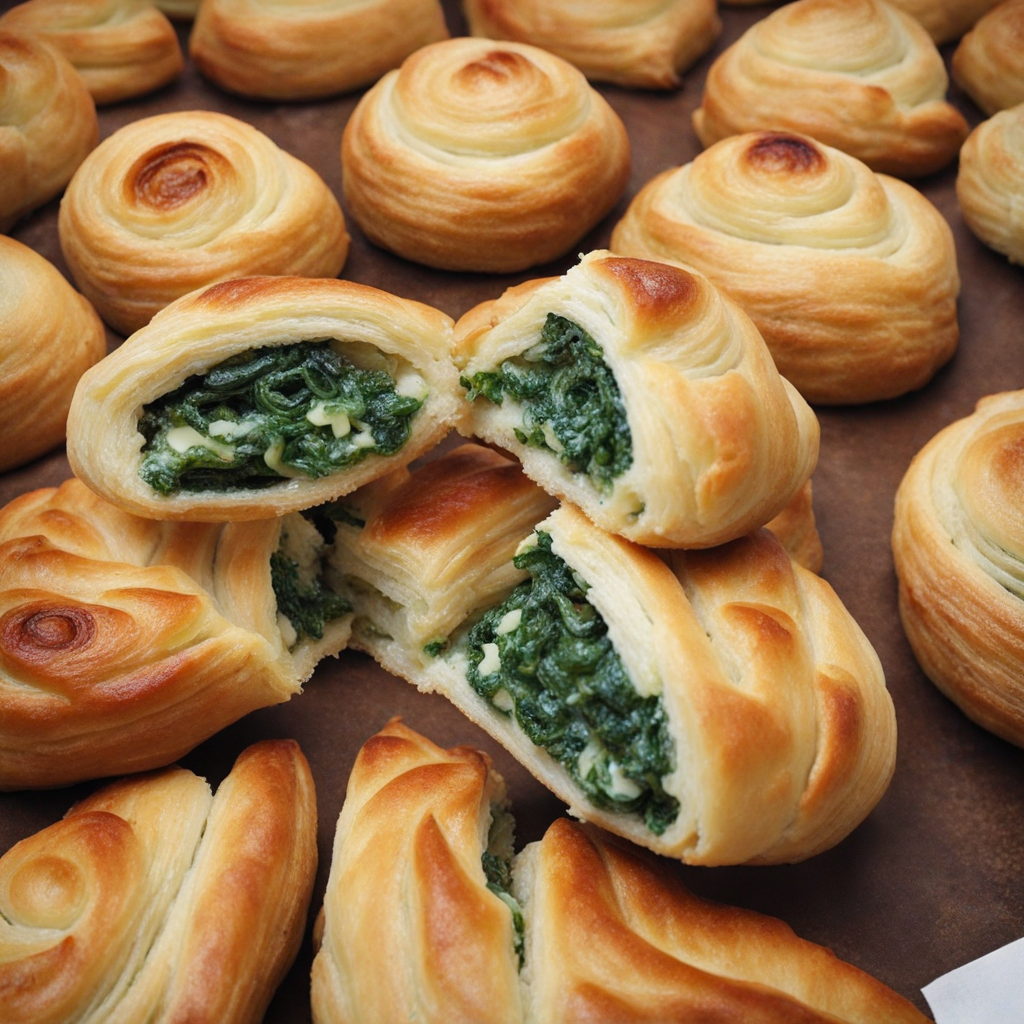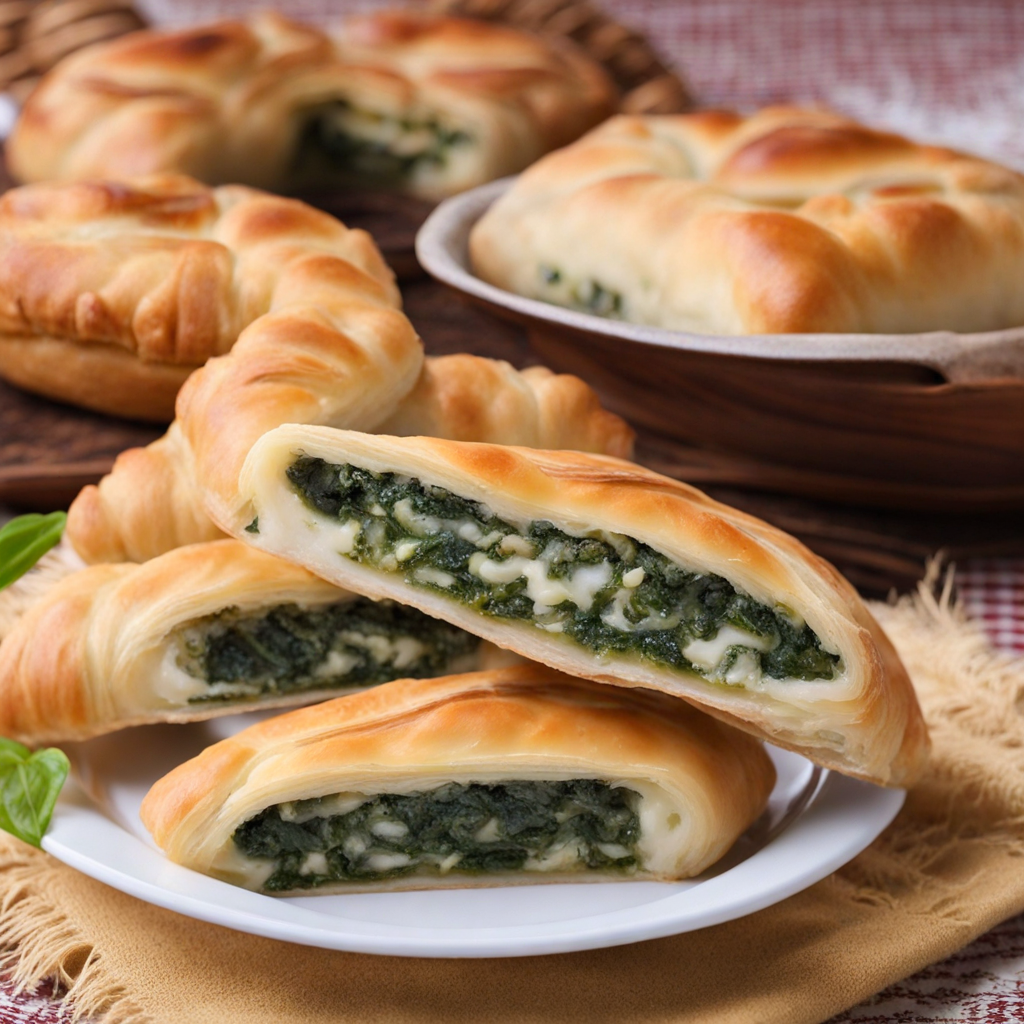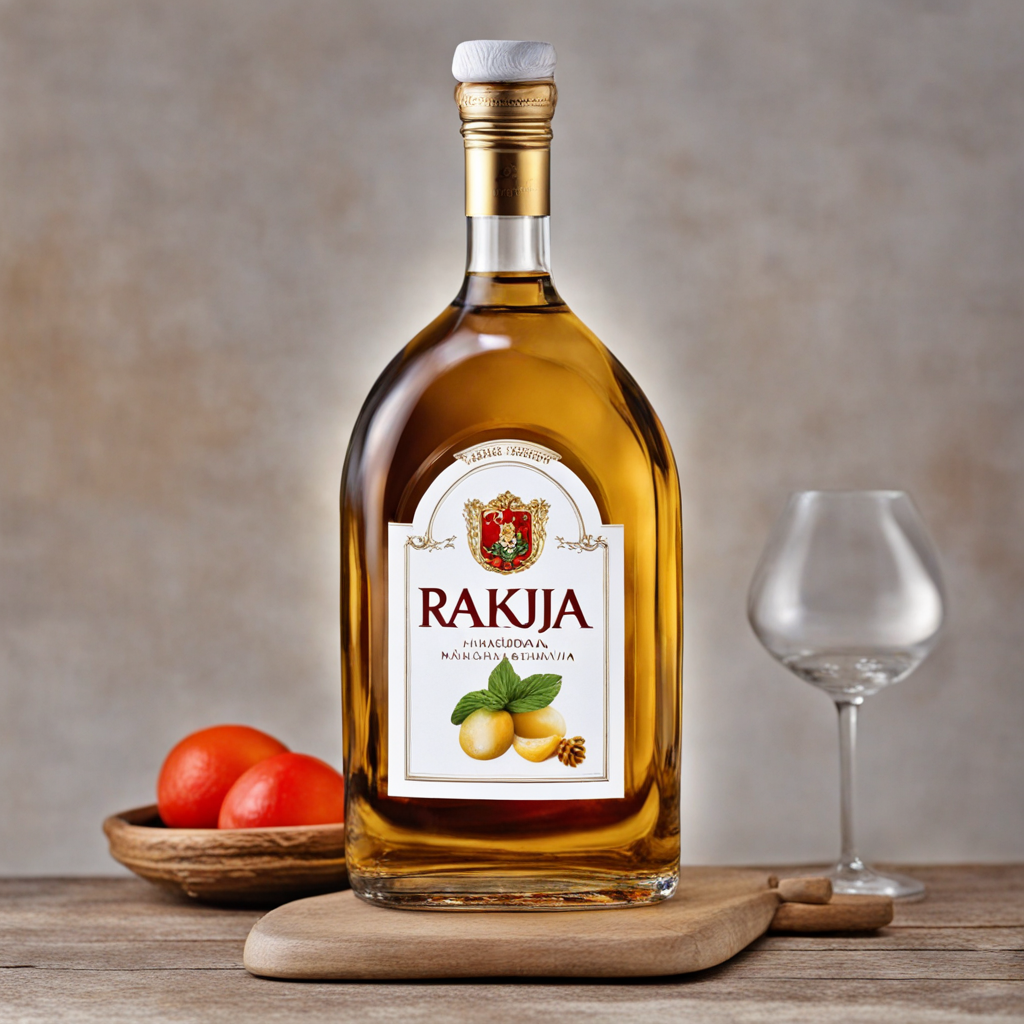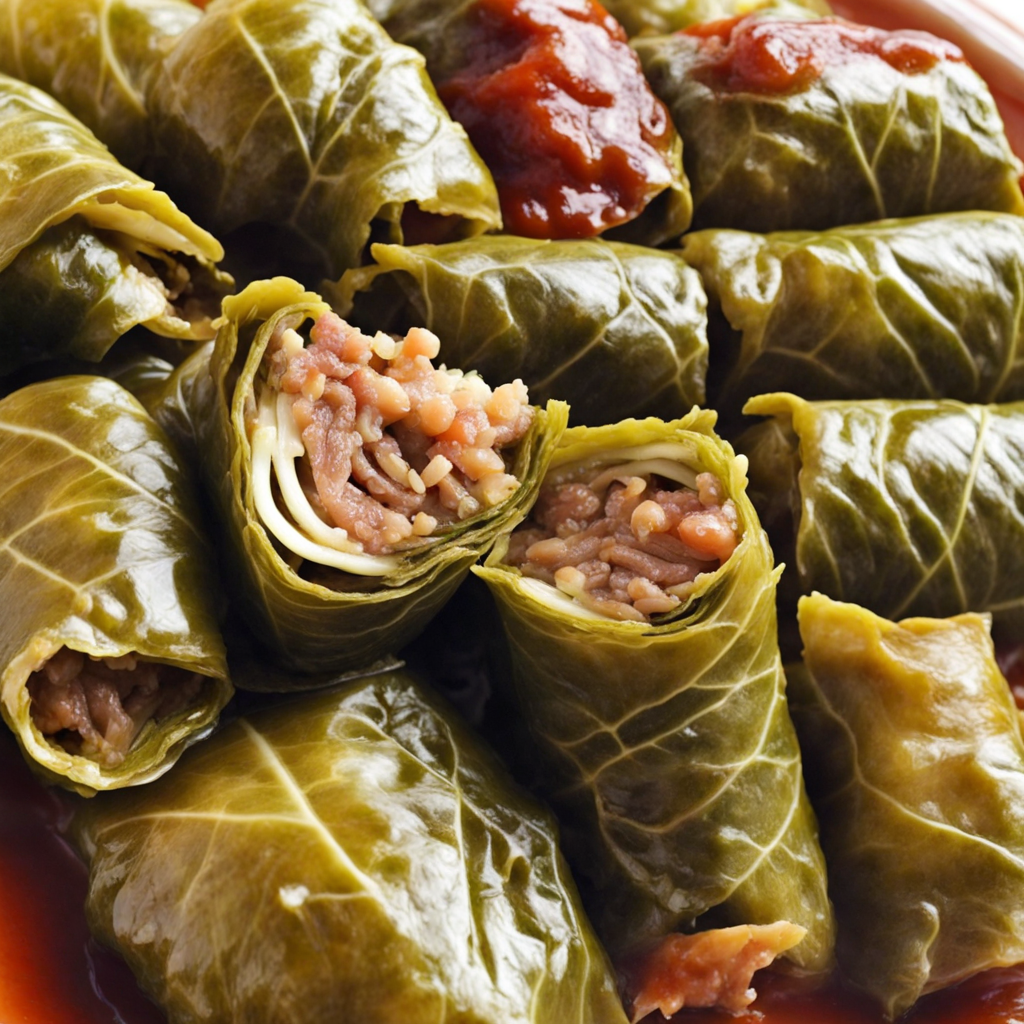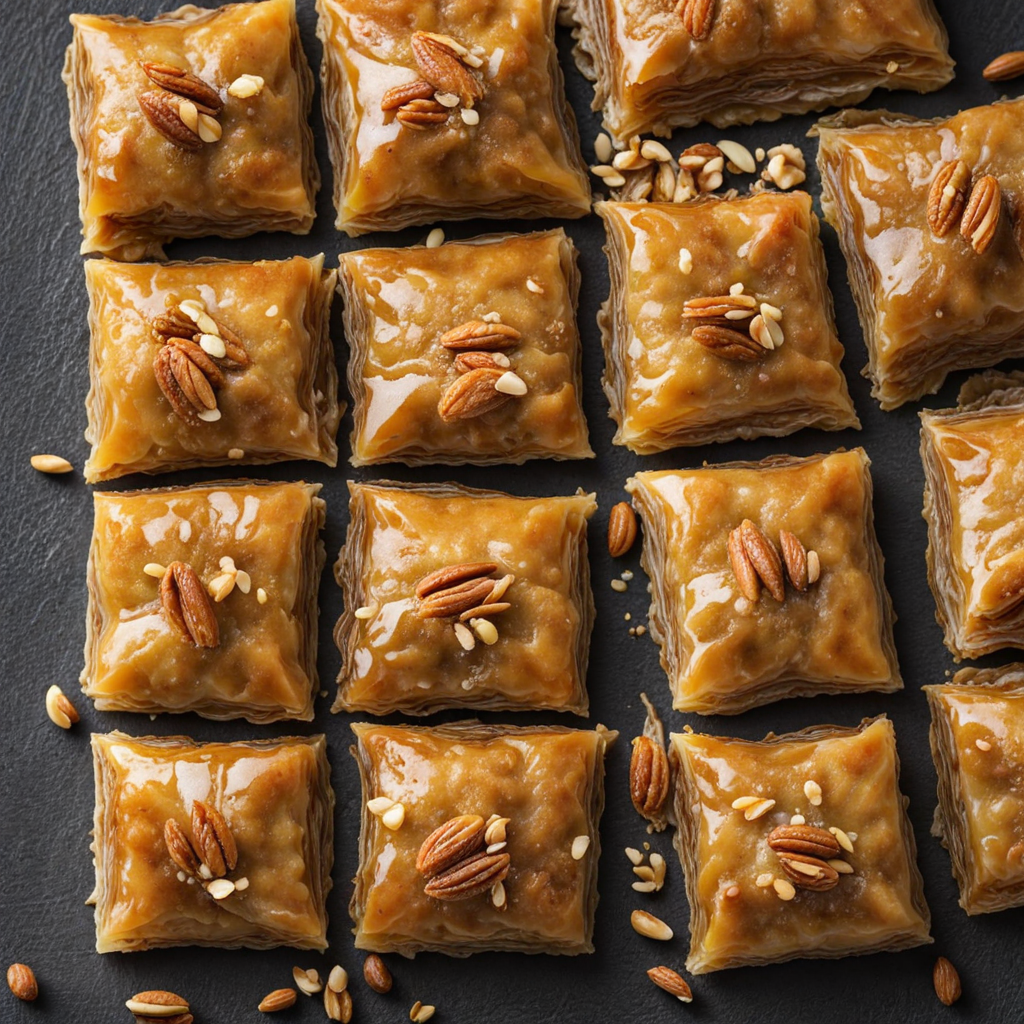Zelnik
Zelnik is a traditional North Macedonian pastry that beautifully encapsulates the culinary heritage of the region. Typically made with thin layers of dough, similar to phyllo, this savory dish is filled with a delightful mixture of ingredients that can vary based on local customs and personal preferences. Common fillings include fresh cheeses, spinach, and sometimes even potatoes or pumpkin, giving each bite a unique and satisfying flavor profile. The dough is expertly rolled and layered, resulting in a crispy exterior that contrasts wonderfully with the soft, flavorful filling inside. As you take your first bite of Zelnik, you are greeted with a crunch that quickly gives way to the warm, savory filling. The combination of melted cheese and the slight bitterness of spinach creates a harmonious balance that is both comforting and invigorating. The use of local herbs and spices often enhances the flavors further, adding a touch of aromatic complexity. This pastry is often enjoyed warm and can be served as a snack, a light meal, or even as part of a festive spread, making it a versatile dish in North Macedonian cuisine. What truly sets Zelnik apart is its role in North Macedonian culture, where it is often made for gatherings, celebrations, and family meals. Each family may have its own recipe, passed down through generations, making every Zelnik a unique experience. Whether enjoyed at a bustling local market or in a cozy home setting, this dish invites you to savor the tastes and traditions of North Macedonia, offering a delicious way to explore the rich culinary landscape of the region.
How It Became This Dish
The Culinary Journey of Зелник: A North Macedonian Delight #### Origins and Traditional Roots The culinary landscape of North Macedonia is a vibrant tapestry woven from various cultural influences, and among its most cherished dishes is *зелник* (zelnik)—a savory pie that encapsulates the essence of Macedonian cuisine. The roots of *зелник* can be traced back to the Ottoman era, a time when the region was a melting pot of diverse cultures and culinary practices. The term "зелник" derives from the word "зелени" (zelena), meaning "green," referring to the dish's primary filling of leafy greens and herbs. Traditionally, *зелник* was prepared using seasonal ingredients, showcasing the agricultural bounty of the region. The pie's filling typically consists of wild greens such as nettles, chard, or spinach, often combined with onions, herbs, and sometimes cheese. These ingredients not only reflect the local flora but also the resourcefulness of the Macedonian people, who relied on what was available in their environment. #### Cultural Significance In North Macedonia, *зелник* is more than just a dish; it is a symbol of hospitality, community, and tradition. It is often served during family gatherings, celebrations, and religious holidays, embodying the spirit of togetherness. The act of making *зелник* is frequently a communal activity, where families and friends come together to prepare the dough and fill it with greens, passing down recipes and techniques through generations. The preparation of *зелnik* also highlights the importance of seasonal eating in Macedonian culture. As a dish that varies according to the time of year, it emphasizes the connection between the people and their land. In spring, lighter greens are utilized, while heartier vegetables may be favored in the autumn. This adaptability not only showcases the culinary creativity of the region but also reinforces the cultural practice of celebrating the changing seasons and the harvest. #### Development Over Time Historically, the preparation of *зелник* involved a labor-intensive process, beginning with the making of the thin, flaky pastry. Traditionally, the dough was rolled by hand, a skill that required both patience and expertise. Over time, as culinary techniques evolved, so too did the methods of making *зелnik*. The introduction of modern kitchen appliances has made the process more accessible, allowing home cooks to replicate this traditional dish with greater ease. In the late 20th century, as North Macedonia gained independence from Yugoslavia, there was a resurgence of interest in national identity, and traditional foods like *зелnik* became a focal point for cultural expression. This renewed appreciation for indigenous cuisines led to a revival of traditional recipes and cooking methods, as well as the emergence of new interpretations of *зелnik*. Chefs began experimenting with different fillings, incorporating ingredients like mushrooms, pumpkin, or even meat, while still respecting the essence of the original dish. The globalization of food culture has also influenced *зелnik*. With the rise of food tourism, many visitors to North Macedonia seek out authentic culinary experiences, bringing renewed attention to this beloved dish. Restaurants and cafes across the country have embraced *зелnik*, offering it as a staple on their menus, often presented alongside other traditional dishes like *tavče gravče* (baked beans) and *ajvar* (pepper spread). This growing popularity has not only contributed to the preservation of the dish but has also helped introduce it to international audiences. #### Contemporary Variations and Innovations In the contemporary culinary scene, *зелник* has evolved into a versatile dish that can be tailored to suit diverse palates. While the classic version remains a beloved favorite, various regional adaptations have emerged. In some areas, *зелnik* may be prepared as a layered dish, akin to a Greek *spanakopita*, where the filling is sandwiched between multiple layers of dough. Others may choose to fry the pastry instead of baking it, resulting in a crispier texture that adds a new dimension to the dish. Moreover, health-conscious trends have prompted some cooks to experiment with alternative ingredients. Whole grain flours, gluten-free options, and organic produce have found their way into modern interpretations of *зелnik*, catering to a broader audience while still honoring the dish's heritage. In the age of social media, the visual appeal of *зелnik* has also caught the attention of food enthusiasts. Instagram and TikTok have become platforms for showcasing the art of making *зелnik*, with users sharing videos that highlight the intricate process of rolling dough and assembling the pie. This not only keeps the tradition alive but also inspires a new generation to engage with their culinary heritage. #### Conclusion: A Dish of Resilience and Identity *Зелник* stands as a testament to the resilience of Macedonian culinary traditions, bridging the past with the present and adapting to the changing landscape of modern gastronomy. It encapsulates the essence of North Macedonian culture—a celebration of community, seasonal ingredients, and the enduring connection to the land. As it continues to evolve, *зелник* remains a cherished dish that resonates with both locals and visitors, inviting everyone to partake in a rich culinary legacy that is as flavorful as it is meaningful. In a world that often prioritizes fast food and convenience, *зелник* serves as a reminder of the importance of taking the time to gather, to cook, and to share meals with loved ones. Whether enjoyed at a family gathering or a trendy café, this beloved pie is a delicious embodiment of North Macedonia's history, culture, and enduring spirit.
You may like
Discover local flavors from North Macedonia


